By default EIGRP uses bandwidth and delay of the line to determine the best path to a remote network. However, if desired, EIGRP can use a composite of four metrics: bandwidth, delay, reliability, and load. Maximum transmission unit (MTU) is not used in EIGRP calculations but is a required parameter in some EIGRP-related commands. Also, by default, EIGRP will provide equal-cost load balancing across up to four links. You can disable load balancing by setting the ‘maximum-paths’ to ’1′. In this lab I use four Cisco 3725 routers [IOS 12.4(15)T10] to demonstrate EIGRP path selection behavior on Cisco routers. Below is a diagram of my setup.
My initial topology and routing table is displayed below.
As you can see from the above, since EIGRP provides equal-cost load balancing across for up to four links, both equal routes to the 12.0.0.0/30 network are in the topology and routing table. Below, I lower the bandwidth of the 10.0.13.0/30 link to 50 MB and since bandwidth is a metric used by EIGRP to determine the best path, you can see that the 10.0.13.0/30 link remains in the topology table but is removed from the routing table. Only the 11.0.0.0/30 link to the 12.0.0.0/30 network remains in the routing table.

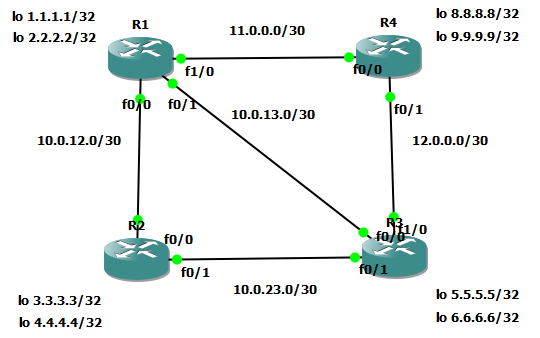
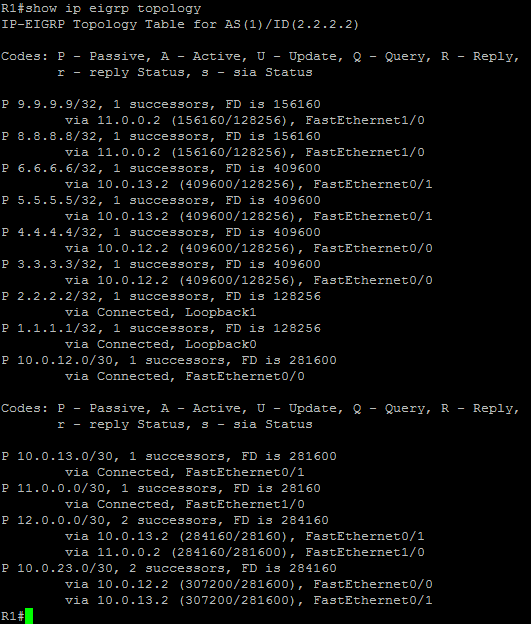
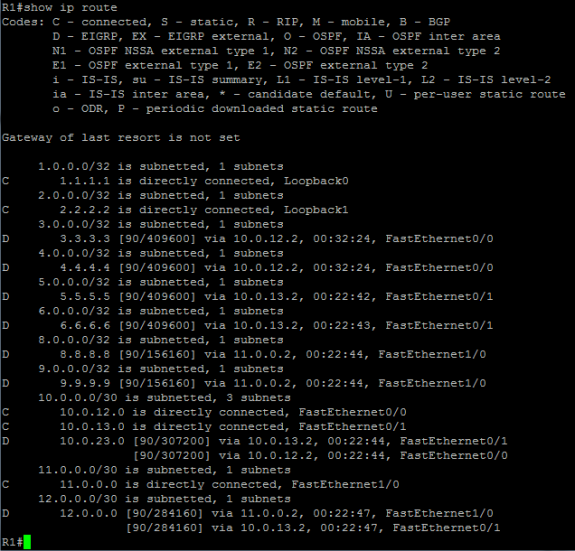
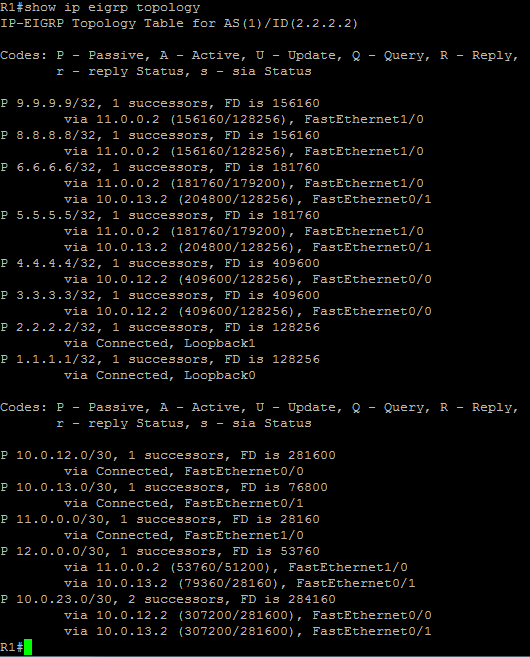
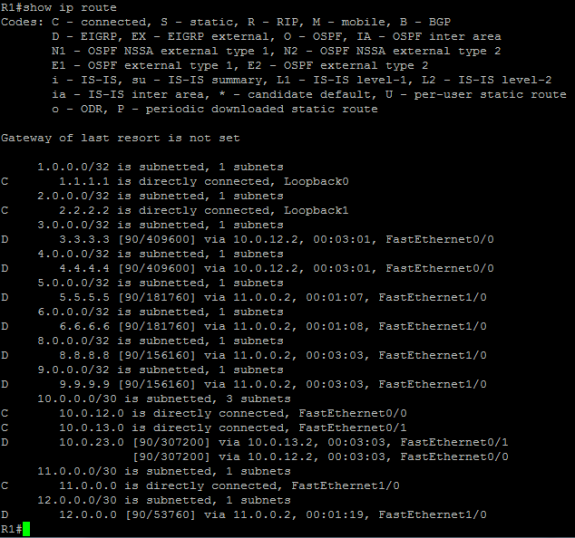


 Twitter
Twitter LinkedIn
LinkedIn Youtube
Youtube RSS
RSS